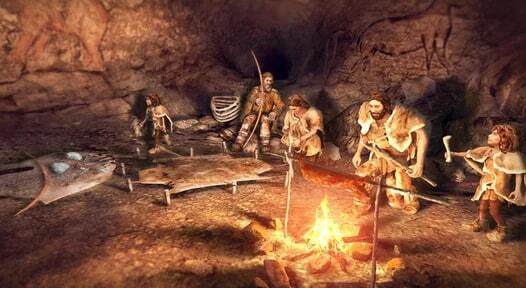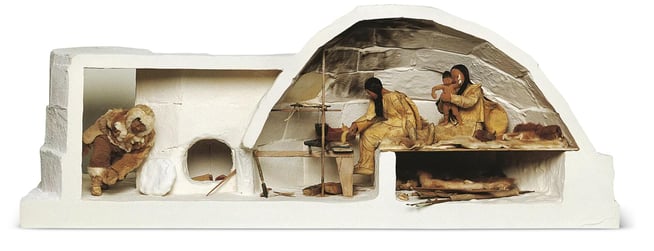In our modern world, we often take the convenience of a climate-controlled home for granted. With a simple adjustment on the thermostat, we can instantly warm up our living spaces. But have you ever stopped to wonder how our ingenious ancestors managed to combat the cold without the luxuries of modern heating technologies? Lets discover them below, in part two of this blog series.
5 Ways Our Ancestors Kept Warm: Part 2
Human haystacks
During medieval times, people would construct "beds" made of straw or hay. This not only provided a comfortable sleeping surface but also offered insulation against the cold ground. The straw acted as a natural barrier, preventing the escape of body heat into the chilly earth below.

Cave dwellings
Some ancient civilizations sought refuge in natural caves, taking advantage of the thermal stability offered by these rocky shelters. The insulating properties of the cave walls helped maintain a more constant temperature, providing a cooler retreat in hot climates and a warmer refuge in colder ones.
Animal assistance
In certain cultures, animals were brought indoors during the night to share body heat with humans. Whether it was snuggling up with a cow in a barn or allowing a dog into the living quarters, this symbiotic relationship helped both humans and animals stay warmer during cold nights.
Winter hibernation
During the harsh winters of Europe, impoverished individuals found a simple yet effective way to stay warm - sleep. In regions like Russia, France, and the Low Countries, the peasantry would spend long periods of time in bed, tightly huddled together to conserve body heat and reduce the need for food. A firsthand account from Burgundy in 1844 described how poor families would spend their days in bed, embracing the warmth and comfort. In rural parts of France and Switzerland, a similar strategy emerged where people would even share their beds with livestock, effectively entering a state of hibernation alongside their animals. This practice was also noted in Russia by the British Medical Journal in 1900, where rural farm workers would sleep throughout the winter, only waking up once a day to eat and tend to the fire. The concept of winter hibernation showcases the resourcefulness and resilience of people in the face of harsh climates.

Igloos
In colder climates, like those inhabited by the Inuit, igloos were masterfully constructed using blocks of compacted snow. The insulating properties of snow helped trap heat inside, turning these icy dwellings into surprisingly cozy homes.
Conclusion
Our ancestors were true innovators, devising inventive ways to stay warm that were both effective and resourceful. From utilizing natural shelters to sharing warmth with animals, their strategies demonstrate the adaptability of the human spirit in the face of challenging climates. As we enjoy the comforts of our HVAC-equipped homes, it's worth appreciating the resilience and creativity that shaped the history of staying warm through the ages.
If you live in the Delaware Valley/Greater Philadelphia area and would like to find comfort within your home, visit our website or give us a call at 215 - 245 - 3200 to learn more.




